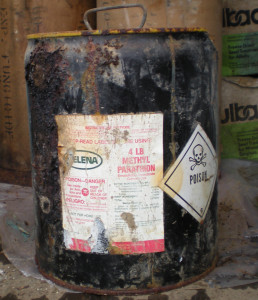Agricultural producers will have another opportunity to dispose of their old and unusable pesticides at no charge on Saturday, June 1, 2013 from 8 a.m. to noon!
Due to limited funds this event is first come, first served. Producers interested in participating will need to register with Clean Harbors Environmental Service. Download a registration form below and submit to Clean Harbors Environmental Service on, or before, May 24, 2013. You may also contact Clean Harbors for a form or additional information at 503-785-0404.
Pesticide Round-up Application – June 1 2013
Producers will also be able to recycle their clean and residue free, triple rinsed plastic containers up to 55-gallon capacity at no charge. No pre-registration is required for container drop off. If you have questions regarding containers or proper cleaning procedures, please contact Agri-Plas Inc. at 503-390-2381 or email to info@agriplasinc.com
This special pesticide collection event is being provided through a partnership that includes the Clackamas County Soil and Water Conservation District, Clackamas River Water Providers, East Multnomah Soil and Water Conservation District, NORPAC Foods, Oregon Department of Agriculture, Clackamas River Basin Council, OSU Extension Service, and Oregon Department of Environmental Quality.
This event is a great opportunity for farmers, nursery owners, and other producers to safely and anonymously to dispose of harmful pesticides at no charge and with no questions asked. Pesticide collection events held in Clackamas County over the past six years have proven increasingly successful. With every event the quantity of pesticides has increased. This shows that the need for this service is greater than anticipated.
The project partners continue to cobble together funds to support the proper disposal of old and unusable pesticides before they get into local waterways. This protects drinking water sources and healthy habitat for wildlife.


